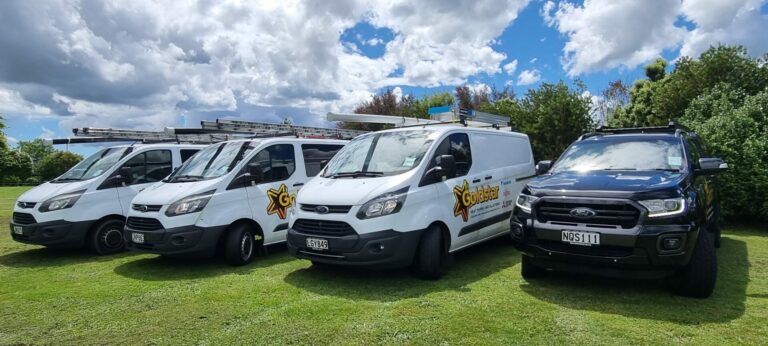A heat pump from Goldstar is a versatile and energy-efficient air conditioning system that can provide both heating and cooling for your Tauranga or Hamilton home. Proper placement of a heat pump is crucial to ensure its efficiency, longevity, and overall performance.
In this guide, we will explore the various considerations and factors involved in determining the best location for your heat pump, with the goal of achieving optimal comfort and cost-effectiveness.
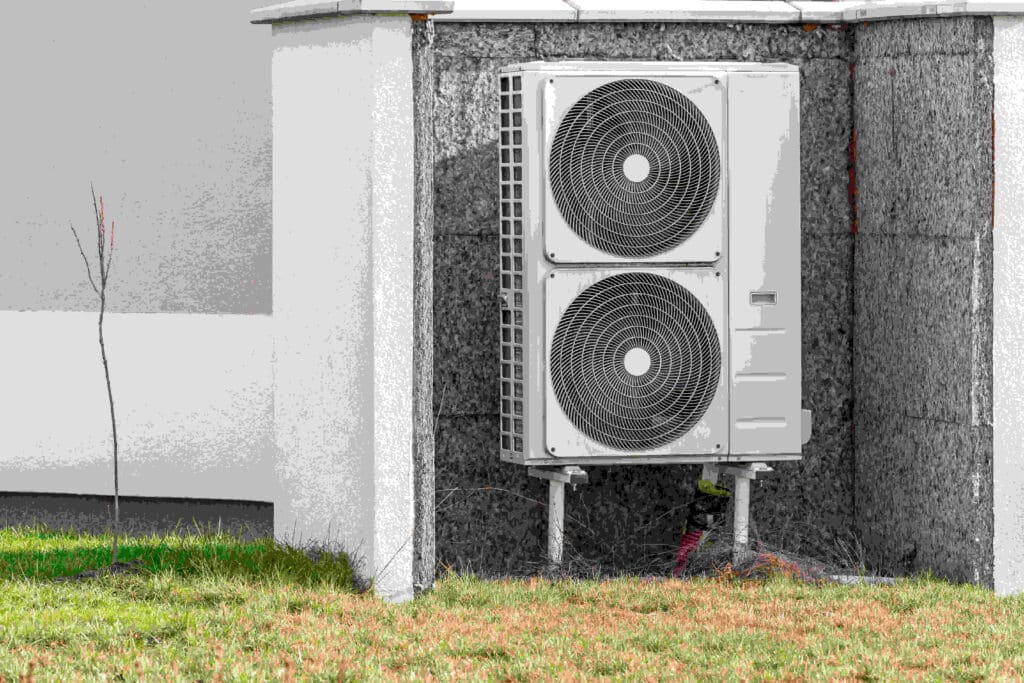
Outdoor Unit Placement:
The outdoor unit, also known as the condenser or compressor, is a critical component of a heat pump system. Its placement plays a significant role in the overall efficiency and functionality of the system.
Airflow and Obstructions:
The outdoor unit should be installed in a location with good airflow. Adequate airflow is essential for the heat exchange process to work efficiently. Make sure there are no obstructions, such as bushes, trees, or structures, that could hinder the flow of air around the unit.
Shade and Sunlight:
While it’s essential to have good airflow, avoid placing the outdoor unit in direct sunlight or a location that receives excessive heat. Heat pumps operate more efficiently when they are not exposed to extreme temperatures.
Noise Considerations:
Heat pumps can generate some noise during operation. Ensure that the outdoor unit is placed away from areas where the noise could be disruptive, such as bedrooms or living spaces. If noise is a concern, consider using noise-reduction features or barriers.
Clearance Requirements:
Check the manufacturer’s recommendations for clearance requirements, or talk to us at Goldstar. Typically, there should be sufficient space around the outdoor unit to allow for maintenance and service access.
Protection from the Elements:
To protect the outdoor unit from the elements, consider using a weatherproof cover or enclosure. This can help prolong the life of the unit and ensure it operates efficiently.
Indoor Unit Placement:
The indoor unit, known as the evaporator, is responsible for distributing conditioned air throughout your home. Proper placement of this unit is essential for even heating and cooling.
Central Location:
Place the indoor unit in a central area of your home, such as a hallway or utility room. This ensures that conditioned air can be evenly distributed to all rooms.
Avoid Obstructions:
Make sure the indoor unit is not obstructed by furniture, curtains, or other obstacles that could impede the airflow. Unobstructed airflow is crucial for efficient operation.
Ductwork and Air Distribution:
If your home has existing ductwork, consider how the indoor unit’s placement will affect the length of the ducts. Longer ducts can lead to heat loss and reduced efficiency. Ensure that ducts are properly sealed and insulated to prevent energy wastage.
Climate Considerations:
Depending on the climate in your region, you may need to install the indoor unit with additional considerations. In colder climates, you might need to plan for supplemental heating sources, while in warmer climates like Tauranga, cooling efficiency should be a priority.
Aesthetic Considerations:
The indoor unit should also fit well with your home’s aesthetics. Some homeowners opt for concealed or ductless mini-split systems to maintain a clean and unobtrusive look.
Airflow and Ventilation:
Proper airflow and ventilation are essential for the efficient operation of a heat pump. Here are some considerations related to airflow:
Filter Accessibility:
Ensure that the indoor unit’s filters are easily accessible for regular maintenance. Clean filters are crucial for efficient operation and air quality.
Return and Supply Air Vents:
Properly position returns and supply air vents to promote even air distribution. Discuss vent placement with your heat pump technician to optimise airflow.
Zoning and Dampers:
In larger homes or homes with varying heating and cooling needs, consider implementing zoning systems and dampers to control airflow to different areas independently.
Noise Reduction Strategies:
Noise from a heat pump can be a concern for some homeowners. Here are strategies to reduce noise:
Sound Barrier Enclosures:
You can use sound barrier enclosures around the outdoor unit to reduce noise transmission. These enclosures are designed to muffle the sound and provide a quieter environment.
Vibration Isolation:
Install vibration isolation pads or mounts under the outdoor unit to reduce vibrations that can create noise.
Regular Maintenance:
Proper maintenance, including keeping components well-lubricated and tightened, can reduce noise caused by loose parts.
Selecting Quiet Models:
When choosing a heat pump, consider models designed for quiet operation, such as Daikin, who offer low-noise options that may be suitable for residential use.
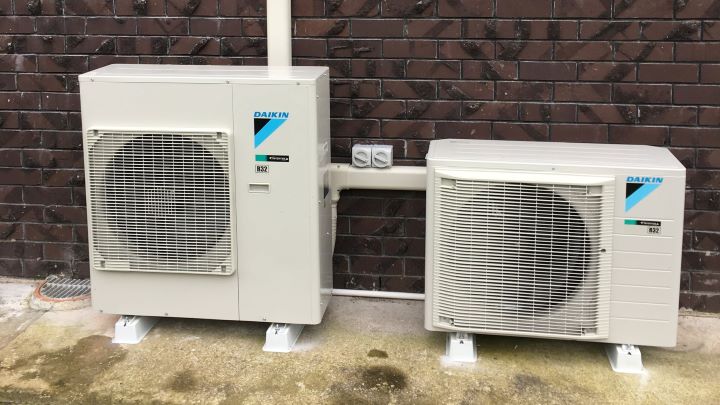
Accessibility and Maintenance:
Proper maintenance is crucial for the longevity and efficiency of your heat pump. Routine servicing requires access to both the indoor and outdoor units.
Access to Outdoor Unit:
Ensure that there is enough space around the outdoor unit for service technicians to easily access it. Proper clearance is necessary for routine maintenance, repairs, and inspections.
Service Accessibility:
Make sure the indoor unit is located where service technicians can easily reach it for filter replacement, coil cleaning, and other maintenance tasks.
Regular Maintenance Schedule:
Establish a regular maintenance schedule to keep your heat pump in optimal condition. This includes cleaning or replacing filters, checking refrigerant levels, and inspecting electrical connections.
Local Regulations and Codes:
When planning the installation of your heat pump, be aware of local building codes and regulations that may impact the placement of the unit. These codes often address issues related to setbacks, noise levels, and safety.
Permit Requirements:
Depending on your location, you may need permits or approvals for heat pump installation. Check with your local authorities to ensure compliance with all regulations.
Zoning and Setbacks:
Some areas have zoning regulations that dictate the minimum distance between the outdoor unit and property lines or neighbouring buildings. Be sure to adhere to these setback requirements.
Professional Assessment:
To make the most informed decision about heat pump placement, it’s advisable to consult with us at Goldstar. We are your qualified heat pump professionals in Tauranga and Hamilton. We can assess your specific home’s characteristics and needs, taking into account factors such as insulation, home size, and heating and cooling requirements.
Site Evaluation:
As heat pump professionals, we can conduct a site evaluation to determine the best placement for both the indoor and outdoor units based on your home’s unique layout and existing infrastructure.
Load Calculation:
Our Professionals at Goldstar can perform a heat load calculation to determine the heating and cooling needs of your home accurately. This information is crucial for selecting the right-sized heat pump and optimising its placement.
Efficiency Recommendations:
Based on our assessment, we can recommend specific models and features that will work best for your Tauranga or Hamilton home and the climate. We can also guide you on energy-efficient options and potential incentives or rebates.
Maintenance and Efficiency Tips:
To maintain the efficiency of your heat pump, here are some additional tips:
Regular Filter Replacement:
Clean or replace the air filters in your indoor unit as recommended by the manufacturer. Clogged filters can reduce airflow and efficiency. We can advise you on this.
Check Refrigerant Levels:
Ensure that refrigerant levels are adequate. Low refrigerant levels can result in reduced efficiency and potential damage to the compressor.
Keep Outdoor Unit Clean:
Clean the outdoor unit regularly to remove debris, leaves, and dirt. A clean unit operates more efficiently.
Programmable Thermostat:
Install a programmable thermostat to control the temperature settings and optimise energy usage, especially when you are away from home.
Regular Professional Maintenance:
Schedule annual maintenance with a Goldstar technician to ensure that your heat pump is in optimal condition. We can identify and address any issues early, preventing costly repairs.
Seal Leaks and Insulate:
Ensure that your home is well-insulated and that there are no drafts or leaks around doors and windows. Proper insulation reduces the workload on your heat pump.
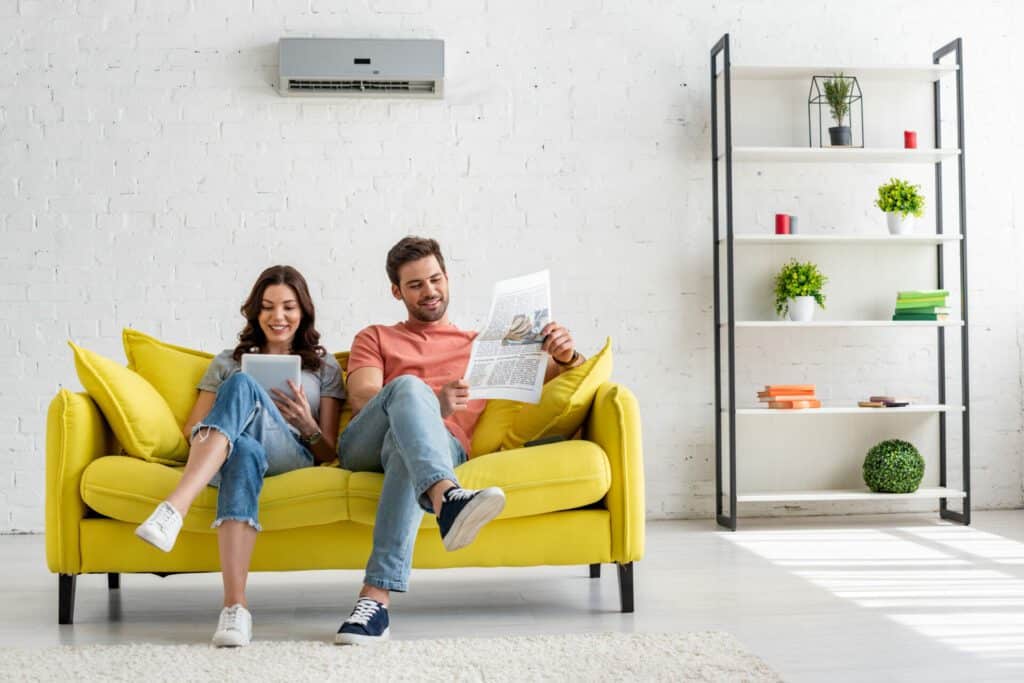
Energy-Efficiency Considerations:
In addition to the previously mentioned factors, it’s essential to understand the energy efficiency implications of heat pump placement. Energy efficiency not only impacts your utility bills but also contributes to reduced environmental impact. Here are some more details on this aspect:
Proper Sizing:
Correctly sizing your heat pump is crucial for energy efficiency. An undersized unit will struggle to maintain desired temperatures, while an oversized one can short-cycle, leading to wasted energy and increased wear and tear. Work with our team at Goldstar to determine the appropriate size for your home.
Orientation and Solar Gain:
Consider your home’s orientation and the potential for passive solar gain. South-facing windows and areas with sunlight exposure can help heat your home during the winter, reducing the load on the heat pump. Proper window treatments can also help maximise or minimise solar gain as needed.
Smart Thermostats and Zoning:
Investing in a smart thermostat allows you to program and control your heat pump more efficiently. You can set different temperatures for different times of the day and days of the week, ensuring your heat pump operates at the right capacity when needed. Zoning systems also enable you to control individual areas, further optimising energy use.
Geothermal Heat Pumps:
If your property allows for it, geothermal heat pumps can be an incredibly efficient choice. They utilise the stable underground temperature to exchange heat, providing both heating and cooling with minimal energy consumption. However, geothermal systems require significant space for underground loops and are typically more expensive to install.
Weather Considerations:
Different climates and weather conditions will influence the best placement of your heat pump. Let’s explore this aspect in more detail:
Cold Climates:
Additional considerations are necessary in regions with cold winters. You might need to install a heat pump with a backup heating source, such as electric resistance heating, to ensure sufficient warmth on the coldest days. The backup heating source can kick in when the heat pump becomes less efficient in extreme cold.
Warm Climates:
In warmer climates, where cooling is a primary concern, it’s crucial to prioritise cooling efficiency. Placing the indoor unit in a central location is essential for even cooling distribution. The outdoor unit should be shielded from direct sunlight to prevent overheating and reduce its workload.
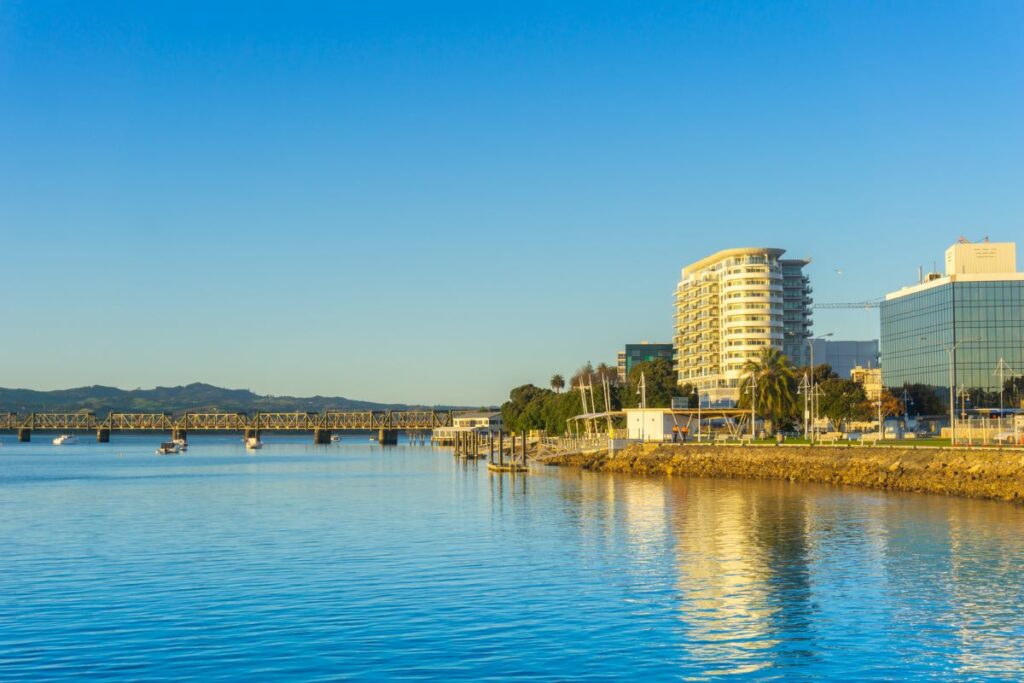
Variable-Speed Compressors:
Consider heat pumps with variable-speed compressors, which can adjust their output based on the current weather conditions and the heating or cooling load. This feature helps optimise energy consumption in response to changing climate conditions.
Aesthetic Considerations:
For some homeowners, the visual impact of a heat pump on their property is a significant concern. There are several ways to address this while maintaining efficient operation:
Ductless Mini-Split Systems:
Ductless mini-split heat pumps are an excellent choice for those who want to maintain a sleek and unobtrusive appearance. These systems consist of one or more indoor air-handling units mounted on the wall or ceiling connected to an outdoor unit. They are ideal for room-by-room climate control and require minimal construction work.
Concealed Outdoor Units:
To minimise the visibility of the outdoor unit, you can consider concealing it behind landscaping or installing a custom enclosure designed to blend in with your home’s exterior.
Architectural Integration:
Some homeowners choose to incorporate the heat pump’s outdoor unit into their home’s design. For example, it can be positioned to complement architectural elements or hidden within a structure like a garden shed or fence.
Additional Placement Tips:
To further enhance your understanding of heat pump placement, here are some additional tips and considerations:
Direction of Airflow:
Ensure that the indoor unit’s airflow is directed away from areas where people spend extended periods. Cold or warm air blowing directly on occupants can lead to discomfort.
Avoid Placement Near Combustion Appliances:
Keep the indoor unit away from combustion appliances like gas water heaters or furnaces. These can interfere with the heat pump’s operation and safety.
Consider Aesthetics and Landscaping:
Take into account how the heat pump’s outdoor unit will blend with your landscaping. Proper landscaping can protect the unit and visually integrate it with your property.
Optimise for Maintenance:
When placing the indoor and outdoor units, consider the maintenance needs and access requirements. Easy access to filter changes, coil cleaning, and routine inspections will ensure the system remains in good working order.
Energy Efficiency Incentives:
Explore available energy efficiency incentives and rebates provided by your local utility company or government. Installing an energy-efficient heat pump and optimising its placement can make you eligible for such programs, saving you money in the long run.
Conclusion: A complete guide to Heat Pump Placement in Tauranga
In this extended guide, we’ve delved into various aspects of heat pump placement in your home, covering not only the fundamental factors but also additional considerations related to energy efficiency, climate, aesthetics, soundproofing, and more.
Properly placing your heat pump is a critical decision that can impact your comfort, utility costs, and environmental footprint. By taking a broad approach to heat pump placement and considering all relevant factors, you can ensure that your system operates optimally for years to come, providing efficient heating and cooling while maintaining a visually pleasing and acoustically comfortable home environment.
Consult with our team at Goldstar Heatpumps to make informed decisions and enjoy the full benefits of your heat pump, whether you’re in Tauranga or Hamilton.

